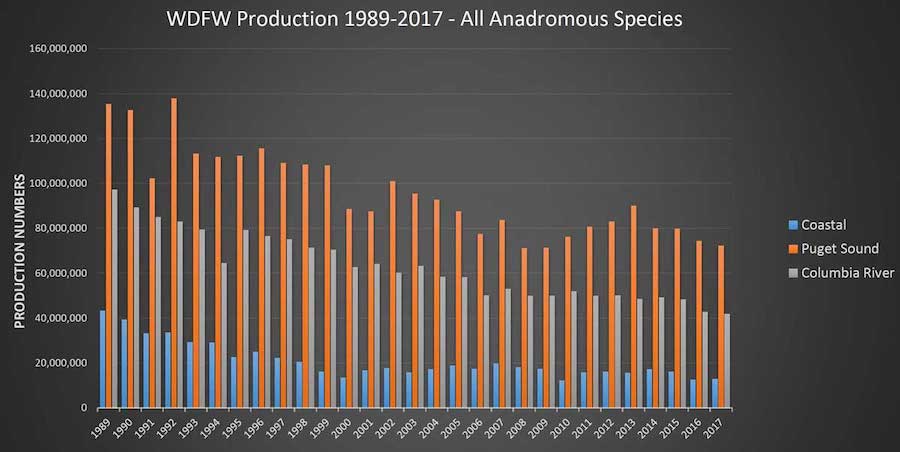forum
library
tutorial
contact

Is Inslee Charging Taxpayers
Too Much to Save Orcas?
by Tom Amato
KTTH Talk Radio, May 1, 2019
|
the film forum library tutorial contact |

|
Is Inslee Charging Taxpayers
by Tom Amato
|
The solution seems relatively simple to me:
If Orca are starving, give them more food.
 What if the solution to saving the southern resident killer whales was something that would not cost tax-payers more than a billion dollars? What if it was something so simple, a fraction of the price and would exclude breaching dams? In all reality, it could be.
What if the solution to saving the southern resident killer whales was something that would not cost tax-payers more than a billion dollars? What if it was something so simple, a fraction of the price and would exclude breaching dams? In all reality, it could be.
Washington Governor Jay Inslee's plan to save the orcas, as it stands now, calls for $1.1 billion. Within that plan: nearly $363 million is for salmon recovery, culvert removal, water-quality and water-supply projects; $296 million for the culvert repairs by the state government; and $750,000 to support evaluation by a task force of breaching the Lower Snake River dams.
A lesser known, and far less pronounced, part of the budget would earmark $12 million for increased hatchery production. What if that $12 million is all Gov. Inslee's Orca Task Force needs from us?
biodiversity concerns.
"Increasing hatchery production is absolutely a critical piece to helping Orca, and there is no reason to let a theoretical concern about biodiversity in the future kill Orca today," Myers said.
Myers doesn't buy the idea that breaching the Snake River Dams would significantly help salmon populations, saying the theory isn't based in science. He pointed to the fact that 96 percent of salmon successful make it past the dam.
"The marginal improvement that you can get by [tearing] them down is zero, because you also create other problems," Myers said.
(bluefish does the math: Setting aside reservoir mortality and just looking at the eight dams that Idaho's juvenile salmonids encounter, "96 percent survival at each dam" is not as good it might first seem.
96% x 96% x 96% x 96% x 96% x 96% x 96% x 96% = 72% survival.)
Myers also pointed to the argument of the effects of tearing down the Elwha Dam as to why removing the Snake River Dams increase salmon as being a moot point. The Washington Department of Fish and Wildlife has concluded that there is no evidence that the recolonization of newly accessible habitat has boosted the natural production of Chinook Salmon, as 96 percent of fish sampled were marked hatchery fish from a hatchery nearby.
"The only thing saving the returns on the Elwha is that hatchery," Myers said. "There's lots of runs that would have simply gone away if it weren't for hatchery fish and the Elwha is one of them."
But what about the toxins in the water affecting the whales? Don't we need some money to take care of that? While it's obviously important to decrease pollutants in the ocean, Myers pointed out the effect of pollutants like DDT on Orca is overblown.
Toxics are typically held in the fats of animals," Myers said. "But if they start to starve, and those toxics get released into their body because they're living off of their fat, the hypothesis is that it harms them."
The solution seems relatively simple to me: If Orca are starving, give them more food. Environmental groups have often targeted hatcheries due the belief they threaten wild salmon. If that is true, and Myers said he doesn't see enough evidence supporting that idea, then these groups must decide if they want Orca to continue to starve or more salmon of the natural variety.
"I don't want to characterize hatcheries as a cure all, but there's no reason not to (boost production)," Myers said.
So will it really take $1.1 billion to save the orcas? Do we need Gov. Jay Inslee to virtue signal about how climate change is killing southern resident killer whales and the only way to save them is embracing the payment of large sums of money toward fighting climate change and cleaning our waters?
Or will it just take some salmon boosting?
learn more on topics covered in the film
see the video
read the script
learn the songs
discussion forum
